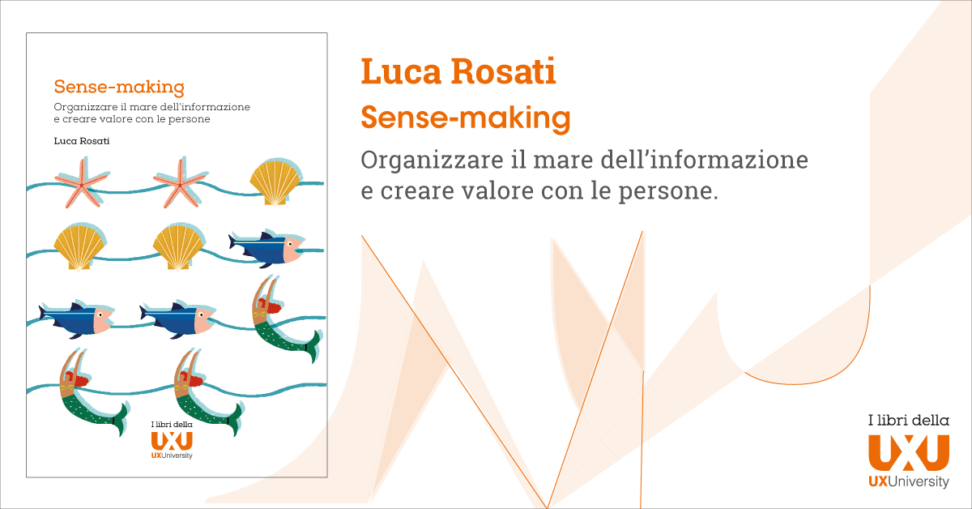Memories Editorials #3 Making sense and giving meaning
Let us begin by talking about a book that our Head of Technology recommended us to read: Sense Making – Organizzare il mare dell’informazione e creare valore con le persone (Sense Making – organizing a sea of information and creating value with people) by Luca Rosati.
Let us begin by talking about a book that our Head of Technology recommended us to read: Sense Making – Organizzare il mare dell’informazione e creare valore con le persone (Sense Making – organizing a sea of information and creating value with people) by Luca Rosati (I libri della UX University ed., 2019, 154 pgs.).

The book provides a few guidelines for organizing information in digital contexts, using examples such as the Netflix and YouTube interfaces, home banking apps, and e-commerce platforms (such as Zara, Ikea, and Mango).
We will share with you the key concepts – the ones we have understood, at least – hereinafter, and shall try to link the suggestions in the book with the work we carry out with our customers daily.
A single criterion to control everything
The only valid criterion is the aim of the system itself.
This is the key concept of the book. It is a law that our group abides by strictly in designing new information architectures. In short, there are no certainties or ready-made solutions, but only an inclination towards improvisation that leads us to propose classes and hierarchies based on project goals, user demands, and the recipients of the information we organize.
Ranganathan, the forefather of our work, once wrote:
Wherever there is structure, sequence emerges. When sequence is helpful to the purpose on hand, it is Classification.
Prolegomena to library classification
Taxonomies and poly-hierarchies
Let us linger on taxonomies for a moment.
Rosati wrote:
Taxonomies reflect a vision of the world free from ambiguity: everything has a single position, and can remain in that place alone.
According to Rosati, manic taxonomy may be cured through poly-hierarchies: elastic, fluid architectures that allow a journey in the information world in multiple directions and from different perspectives. Poly-hierarchies cater to different mental structures and research methods thanks to the fact that the same resources may be found within different classes.
At Memories, we are often accused of being seagulls or chumbawambas, simply because we infest online archives with hundreds of navigation facets subdivided into dozens of different filters. But the truth is that we are unintentionally creating poly-hierarchies.
Free listing, tree-testing, co-design, card sorting, berry picking, and other words with a high semantic impact
Co-design means that information systems are designed by listening to users. At Memories, perhaps we do not use complex symbolic gimmicks, strategy games, or brain teasers, but before we design a content tree, we listen. We ask questions to our future users, we speak to document creators, and we conduct long interviews to create a context around the content.
Context salience and pressure
Umberto Eco claims that every classification is susceptible to context pressure. Consequently, a classification method that is too rigid ends up grinding the content. In the words of Rosati, the concept of the scientificity of a classification system needs to be replaced with that of salience.
Salience is the set of key dimensions of a context that are relevant, in a certain space and time, to the recipients of a form of classification.
Relations vs Information Overload
Back to the book title of the, what causes a loss or lack of sense?
Most likely, the culprits are disorder, fragmentation, and information overload. To fight the recurrence of these information pathologies, you do not need equally excessive structures, but more elastic networks of relations and connections between objects.
In the resulting scenario:
The relations between objects count more than the objects themselves.
We fight, meekly, against a special form of information overload: the one generated by a pileup of information in time. We agree that the most effective tool to give or maintain sense is the creation of relations.
The challenge and the beauty of organizing information boil down to this: creating (cor)relations. It is through relations that we know the world and it is also through relations that we assign a meaning to things. The correlation between two pieces of information creates new information: knowledge.
